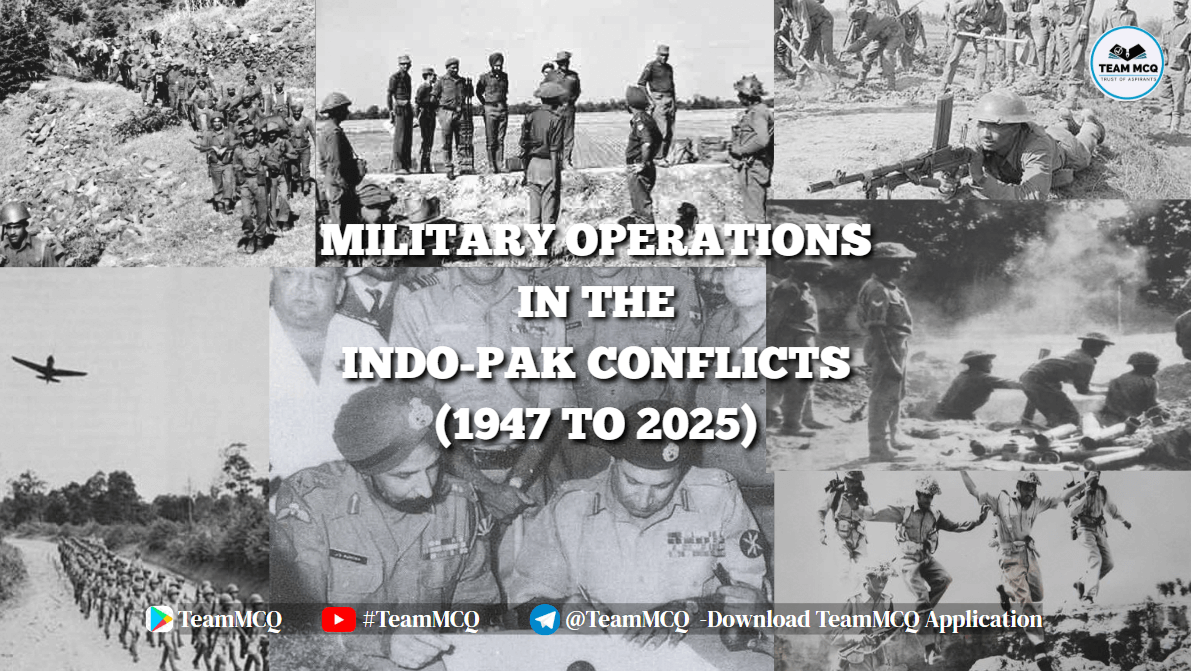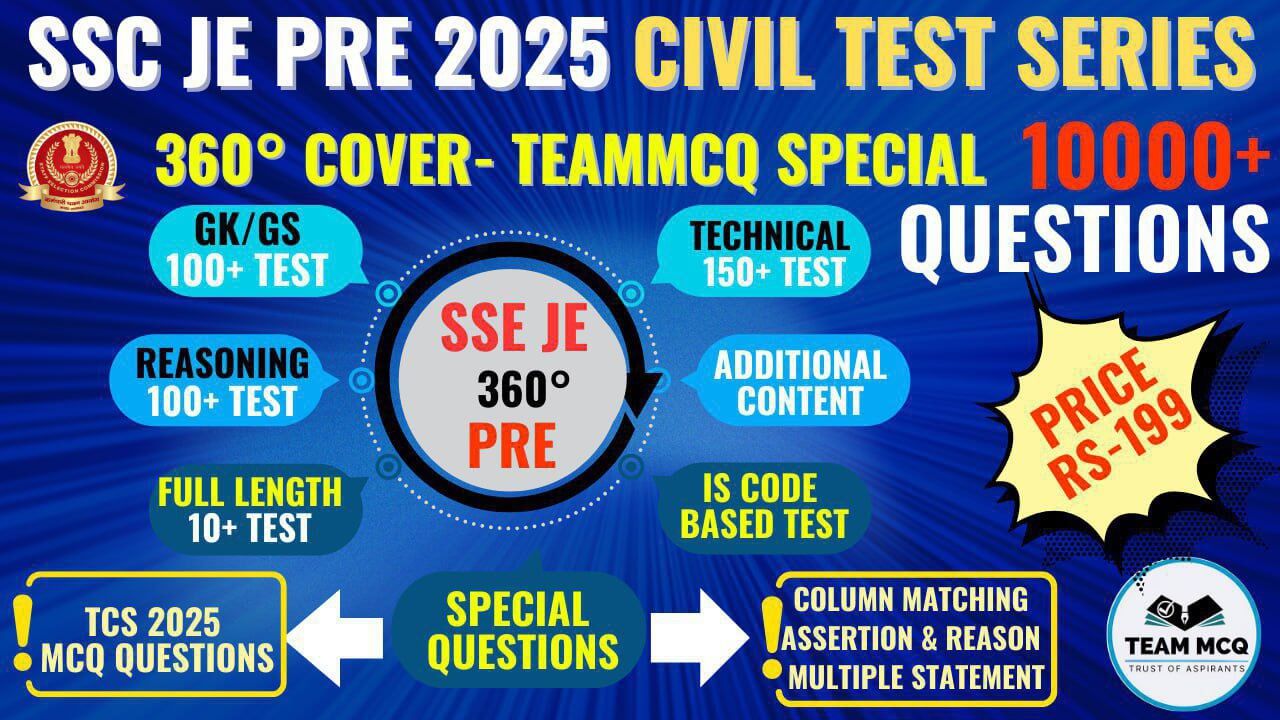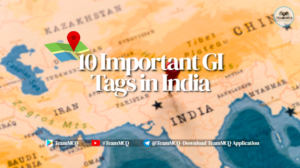Explore the epic military operations during the Indo-Pak conflicts from 1947 to 2025. Learn about the battles, strategies, and pivotal events that shaped the history of these wars, including their aftermath and consequences.
Introduction: Indo-Pakistani Conflicts
The Indo-Pakistani conflicts, spanning from 1947 to 2025, have profoundly influenced the geopolitical and military landscape of South Asia. These conflicts, rooted in territorial disputes, ideological divisions, and political tensions, have witnessed a series of major military operations that shaped the trajectory of both India and Pakistan. From the first war in Kashmir to recent cross-border skirmishes and modern strategic offensives, these operations illustrate the evolving nature of warfare in the subcontinent.
This article offers a comprehensive exploration of key military operations during the Indo-Pakistani confrontations, analyzing their objectives, execution, and long-term implications. Whether you’re a student of military history, a policy enthusiast, or simply curious about the strategic dimensions of South Asian conflicts, this in-depth guide to Indo-Pak operations from 1947 to 2025 provides critical insights into one of the world’s most enduring military rivalries.
Importance of military operations in shaping the Wars
Military operations have played a pivotal role in shaping the course and outcomes of the Indo-Pakistani wars, from the first conflict in 1947 to the most recent skirmishes. These operations not only determined the tactical advantages and territorial gains but also influenced international diplomacy and the political landscapes of both countries. Here’s how military operations were crucial in shaping the Indo-Pakistani wars:
1. Strategic Significance
Military operations often targeted critical geographical regions, which had strategic importance. For example, in the 1947-48 war, Operation Gulmarg was a key operation for Pakistan, aiming to capture Kashmir, a region with both geographical and political significance. The operations in Kashmir during both the 1947 and 1965 wars were crucial, as control over the region would affect the security balance and the future direction of the conflict. Similarly, during the 1971 war, operations aimed at cutting off East Pakistan (now Bangladesh) from West Pakistan were decisive in shaping the war’s outcome.
2. Tactical Superiority
Each military operation showcased the evolving military capabilities of both nations. The 1965 war, for instance, saw the use of modernized tank warfare and airstrikes, with both countries demonstrating impressive military tactics. Operations such as Operation Grand Slam (Pakistan) and Operation Gibraltar (Pakistan) aimed to strategically invade Kashmir, though they ended in a stalemate. In contrast, Operation Cactus Lily in 1971 showed India’s ability to execute swift and well-coordinated operations, which significantly contributed to the eventual creation of Bangladesh.
3. Psychological Impact
Military operations, especially the large-scale ones, also had significant psychological and political impacts. The successes or failures of operations could influence domestic morale, shape international perceptions, and even impact leadership. For example, the 1971 Indo-Pak war, with India’s Operation Searchlight against Pakistan’s western front, was a game-changer. The swift and decisive victory in East Pakistan galvanized the Indian military’s image internationally and led to the creation of Bangladesh, changing the region’s balance.
4. Political Consequences
Military operations often carried major political consequences. For instance, in 1947, the military conflict over Kashmir between India and Pakistan brought international attention to the issue, leading to UN intervention and the subsequent partition of Kashmir. The 1965 war had a similar effect in terms of international diplomacy, leading to the Tashkent Agreement and a ceasefire, but without resolving the core issue of Kashmir.
5. Technological Evolution
Over the years, each conflict saw a rapid evolution in military technology. From the early use of small arms and rifles in 1947 to the more advanced tanks, aircraft, and artillery in 1965, and the introduction of nuclear deterrence in 1971, these military operations reflected the changing nature of warfare. The 1999 Kargil conflict, for instance, was significantly influenced by advancements in technology, including the use of satellite imagery and precision-guided munitions, making it a notable point of evolution in the modern age of warfare.
6. Impact on Diplomacy and Peace Efforts
The results of military operations influenced peace negotiations and diplomatic efforts in the aftermath of each war. After the 1965 war, the Tashkent Agreement helped pave the way for a ceasefire, while after the 1971 war, the Shimla Agreement was crucial in formalizing the post-war boundaries. These agreements were largely shaped by the outcomes of military operations, highlighting their importance in diplomatic contexts.
7. Legacy of Military Operations
The legacy of military operations continues to influence the ongoing Indo-Pakistani rivalry. Many of the same military strategies and tactics, along with unresolved territorial disputes, continue to fuel tensions.
For example, the 2019 Balakot airstrike by India was a direct reflection of the legacy of air and ground operations from previous wars. Despite advances in military technology and changes in tactics, the core nature of the military rivalry between the two nations remains, with each operation influencing the current state of affairs.
In conclusion, military operations have not only shaped the battlefield outcomes of each Indo-Pakistani war but also influenced the political, diplomatic, and technological trajectories of both countries. From the tactical decisions made on the ground to the political ramifications felt globally, these operations continue to play a crucial role in the shaping of Indo-Pakistani relations. Understanding the impact of military operations provides essential insights into the ongoing tensions and the future of peace efforts in the region.
List of Major Indo-Pak Wars:
1. First Indo-Pak War (1947-1948) – The Kashmir Conflict
- Date: October 1947 – January 1949
- Key Event: The war began after the princely state of Jammu and Kashmir, which was ruled by a Hindu Maharaja but had a Muslim-majority population, acceded to India following an invasion by tribal militias supported by Pakistan.
- Outcome: The war ended with a ceasefire brokered by the United Nations, establishing the Line of Control (LoC) and leaving Kashmir divided between India and Pakistan, though the region remained a contentious issue.

2. Second Indo-Pak War (1965) – Operation Gibraltar and Operation Grand Slam
- Date: August 1965 – September 1965
- Key Event: The war was initiated by Pakistan’s attempt to infiltrate forces into Kashmir through Operation Gibraltar, followed by India’s counterattack. Both sides engaged in heavy combat along the international border, leading to a military stalemate.
- Outcome: The war ended in a ceasefire, with both sides agreeing to return to the pre-war status quo. The Tashkent Agreement, brokered by the Soviet Union, was signed in 1966 to restore peace.

3. Third Indo-Pak War (1971) – Bangladesh Liberation War
- Date: December 1971
- Key Event: The war broke out due to the Bangladesh Liberation movement, where East Pakistan (now Bangladesh) sought independence from West Pakistan (now Pakistan). India intervened in support of the independence movement, leading to full-scale military operations.
- Outcome: The war ended with a decisive Indian victory and the creation of Bangladesh as an independent nation. The war also led to the signing of the Instrument of Surrender on December 16, 1971.

4. Kargil War (1999)
- Date: May – July 1999
- Key Event: The Kargil War was a limited conflict between India and Pakistan, sparked by the infiltration of Pakistani soldiers and militants into the Kargil district of Jammu and Kashmir. It was a high-altitude war with India successfully regaining control of the territory.
- Outcome: The conflict ended with Pakistan withdrawing its forces due to international pressure. India regained control over the Kargil region, and the war led to significant changes in both military strategies and diplomacy between the two nations.

5. Ongoing Border Tensions and Skirmishes
- Date: Continual post-2000s
- Key Event: While no formal large-scale wars have taken place since the Kargil War, tensions have remained high, with frequent skirmishes and military confrontations along the Line of Control (LoC) and the international border. Both countries have engaged in military operations in response to attacks, insurgencies, and cross-border terrorism.
- Outcome: Ongoing hostilities and attempts at diplomatic resolution, with occasional ceasefires and de-escalation measures, but no definitive peace agreement yet.
List of major Indo-Pak wars in a Table format
| War | Date | Key Event |
|---|---|---|
| First Indo-Pak War (1947-1948) | October 1947 – January 1949 | Kashmir conflict triggered by Pakistan’s tribal invasion and Kashmir’s accession to India. |
| Second Indo-Pak War (1965) | August 1965 – September 1965 | Pakistan’s Operation Gibraltar and India’s counterattack led to full-scale fighting along the border. |
| Third Indo-Pak War (1971) | December 1971 | India intervened in the Bangladesh Liberation War, supporting East Pakistan’s independence movement. |
| Kargil War (1999) | May – July 1999 | Pakistani infiltration into Kargil led to India regaining control after intense combat. |
| Ongoing Border Tensions | Continual post-2000s | Frequent skirmishes and military confrontations along the Line of Control and international border. |
Major Indo-Pak Military Operations
The Indo-Pak conflicts have been defined by numerous military operations that have shaped the history of both nations. These operations, largely related to territorial disputes, particularly over Kashmir, have had profound impacts on the political and military landscapes of South Asia. Below are the key operations that have defined the military confrontations between India and Pakistan.
1. Operation Gulmarg (1947-48)
In October 1947, Pakistan initiated Operation Gulmarg, which was a military campaign aimed at infiltrating Jammu and Kashmir to annex the region. This operation triggered the First Indo-Pak War (1947–48), leading to India’s intervention in Kashmir and subsequent military action. The war resulted in a ceasefire brokered by the United Nations in 1948, and the establishment of the Line of Control (LoC) dividing the region.
2. Operation Duck (1948)
In response to Pakistan’s Operation Gulmarg, India launched Operation Duck in early 1948, focusing on counteroffensive measures to reclaim lost territory in Jammu and Kashmir. This operation helped India secure significant strategic positions and was instrumental in maintaining control over key areas of Kashmir.
3. Operation Gibraltar (1965)
Pakistan initiated Operation Gibraltar in August 1965, with the objective of infiltrating Jammu and Kashmir to incite rebellion against Indian rule. The operation led to the Second Indo-Pak War (1965). Though Pakistan had initial successes, the operation eventually failed due to India’s strong military response, resulting in a stalemate and the subsequent Tashkent Agreement to end hostilities.
4. Operation Grand Slam (1965)
Launched simultaneously with Operation Gibraltar, Operation Grand Slam was Pakistan’s offensive aimed at capturing Akhnoor in Jammu and Kashmir. The goal was to cut off India’s supply lines to the region. Despite initial successes, the operation was halted due to tactical errors and India’s counteroffensive. This operation, combined with Operation Gibraltar, contributed to the escalation of the 1965 war, but the conflict was ultimately resolved diplomatically.
5. Operation Cactus Lily (1971)
During the Bangladesh Liberation War in 1971, India intervened on behalf of East Pakistan, which later became Bangladesh. Operation Cactus Lily was part of India’s military campaign to prevent Pakistani advances and protect the Bengali population. The operation contributed to the fall of Dhaka, leading to the creation of Bangladesh and the defeat of Pakistani forces in East Pakistan.
6. Operation Meghdoot (1984)
Operation Meghdoot was India’s successful military operation launched in 1984 to secure the Siachen Glacier in the Karakoram Range, a strategically critical area. The operation aimed to prevent Pakistan from gaining control of the glacier. This conflict remains unresolved and continues to be a point of tension between the two countries over territorial claims in the high-altitude region.
7. Operation Brasstacks (1987)
Operation Brasstacks was a large-scale Indian military exercise conducted in 1987. Although primarily an exercise, it led to heightened tensions between India and Pakistan, as it was seen by Pakistan as a potential preparation for a full-scale invasion. The operation demonstrated India’s military readiness and was a key moment in shaping the post-1987 military dynamics between the two nations.
8. Operation Vijay (Kargil) (1999)
Operation Vijay, launched in May 1999, was India’s military response to Pakistan’s infiltration of the Kargil district in Jammu and Kashmir. Pakistani forces, along with insurgents, occupied high-altitude positions in the region, leading to one of the most intense conflicts between India and Pakistan since the 1971 war. India’s successful counteroffensive resulted in the reclaiming of the territory and the eventual withdrawal of Pakistani forces. The operation also highlighted the nuclear dimension of Indo-Pak conflicts, as both nations possessed nuclear weapons at the time.
9. Operation Parakram (2001-2002)
Following the 2001 Indian Parliament attack, India launched Operation Parakram, a large-scale military mobilization aimed at deterring further Pakistani-sponsored terrorism. This operation, which involved the movement of Indian troops along the Pakistan border, significantly raised tensions between the two nations but did not escalate into a full-scale war.
10. Operation Swift Retort (2019)
In February 2019, India carried out an airstrike on a terrorist training camp in Balakot, Pakistan, in retaliation for a suicide bombing that killed 40 Indian paramilitary personnel. In response, Pakistan launched Operation Swift Retort, which resulted in an aerial dogfight between the two nations. Although the operation did not escalate into a full-scale war, it marked a critical moment in the nuclear-armed nations’ military confrontation, and international tensions were high as a result.
Conclusion: The Evolution of Military Operations
Each of these operations has played a critical role in shaping the course of Indo-Pak relations, and the military strategies adopted by both countries have evolved over time. From the first Kashmir war in 1947 to the Kargil War in 1999 and the more recent tensions of 2019, military operations remain central to the security dynamics between India and Pakistan. The history of these operations highlights the volatile nature of the region and the importance of military preparedness in resolving conflicts.
Table summarizing the Major Indo-Pak Military Operations (1947–Present):
| Operation Name | Year(s) | Description | Outcome |
|---|---|---|---|
| Operation Gulmarg | 1947-48 | Pakistan’s operation to infiltrate Jammu and Kashmir, initiating the First War. | Ceasefire and establishment of LoC. |
| Operation Duck | 1948 | India’s counteroffensive against Pakistan’s invasion in Kashmir. | India regained key territories. |
| Operation Gibraltar | 1965 | Pakistan’s attempt to infiltrate Kashmir to incite rebellion. | Failed due to Indian counteroffensive. |
| Operation Grand Slam | 1965 | Pakistan’s offensive aimed at capturing Akhnoor and cutting off Indian supply lines. | Halted due to tactical errors. |
| Operation Cactus Lily | 1971 | Indian intervention during the Bangladesh Liberation War to protect East Pakistan. | Contributed to Bangladesh’s independence. |
| Operation Meghdoot | 1984 | India’s operation to secure Siachen Glacier, preventing Pakistan’s control. | India established control over the glacier. |
| Operation Brasstacks | 1987 | A large-scale military exercise by India that heightened tensions with Pakistan. | Avoided full-scale war. |
| Operation Vijay (Kargil) | 1999 | India’s response to Pakistan’s infiltration in Kargil; led to the Kargil War. | India reclaimed the territory. |
| Operation Parakram | 2001-2002 | Indian military mobilization in response to the 2001 Indian Parliament attack. | Raised tensions but no full-scale war. |
| Operation Swift Retort | 2019 | Pakistan’s aerial retaliation after India’s airstrike on Balakot in response to a terrorist attack. | Averted full-scale war, marked nuclear tensions. |
Recent Indo-Pak Military Operations: Operation Sindoor
As Indo-Pak relations continued to evolve post-1999, the strategic dynamics between the two nations have included several covert and overt military operations. Among these, Operation Sindoor stand out as significant recent developments in the ongoing military engagement between India and Pakistan.
Operation Sindoor: India’s Response to Terrorism
In the early hours of May 7, India launched Operation Sindoor as a response to the April 22 Pahalgam terror attack, which killed 26 civilians, mostly tourists. This operation marked a shift in India’s approach to counter terrorism, going beyond traditional methods to target terrorist groups and their supporters directly.

Key Points of Operation Sindoor:
- Precision without Escalation:
The strikes were precise and targeted only terror infrastructure, avoiding any civilian or military casualties. This showed India’s commitment to dealing with terrorism firmly while avoiding unnecessary escalation. - Destruction of Terror Launchpads:
India targeted and destroyed nine major terror launchpads linked to groups like Lashkar-e-Taiba, Jaish-e-Mohammed, and Hizbul Mujahideen. These locations were identified as key bases for planning and executing attacks against India. - Deep Strikes into Pakistan’s Mainland:
Operation Sindoor involved deep strikes inside Pakistan, targeting areas that were considered safe from retaliation, such as Punjab and Bahawalpur. By attacking these areas, India made a bold statement that no part of Pakistan would be safe as long as terror groups operated from its soil. - Exposing Air Defence Weaknesses:
Indian forces, including Rafale jets equipped with SCALP missiles and HAMMER bombs, executed the strikes with precision. This operation exposed gaps in Pakistan’s air defense system, showing how India bypassed or neutralized these defenses successfully. Importantly, no Indian assets were lost during the operation.
👉Tap on Operation Sindoor to read the full article and explore more in-depth insights.
Conclusion: Military Operations in the Indo-Pak Conflicts: 1947 to Present
The Indo-Pak military operations from 1947 to the present have played a crucial role in shaping the geopolitical landscape of the subcontinent. These operations, ranging from border skirmishes to full-scale wars, have highlighted the importance of military preparedness, strategic planning, and swift decision-making in warfare.
Reflection on the Importance of Military Preparedness
Military preparedness has been a defining factor in the success or failure of operations in the Indo-Pak conflicts. Operations such as Operation Meghdoot and Operation Vijay (Kargil) showcased the importance of quick mobilization, logistical readiness, and effective command structures in securing national interests.
Both India and Pakistan have invested heavily in enhancing their military capabilities, recognizing that timely and effective responses to threats are critical in maintaining national security. Furthermore, the Operation Brasstacks incident of 1987 underscored the need for careful strategic planning to avoid unnecessary escalation and miscommunication, especially in a nuclear-capable region.
Lessons Learned from the Operations
- Significance of Intelligence and Surveillance: Many operations, especially Operation Vijay (Kargil) and Operation Cactus Lily, demonstrated the vital role of intelligence in anticipating enemy movements and securing territorial integrity. The success of operations has often hinged on accurate reconnaissance and surveillance.
- Importance of Diplomacy alongside Military Action: The Kargil conflict, though a military success for India, showed the importance of international diplomacy in de-escalating a potential nuclear war. Operation Swift Retort (2019) reflected the growing role of diplomacy to mitigate military action and avoid an all-out war between nuclear powers.
- Preparedness for Asymmetric Warfare: The wars and operations also revealed the shifting nature of warfare, with unconventional tactics like Operation Gibraltar and Operation Grand Slam being utilized. These operations demonstrated the need for military forces to be adaptable and equipped to deal with non-traditional threats.
- Need for Comprehensive Security Strategies: Military operations in the Indo-Pak context have taught the lesson that a strong military alone is not sufficient. Comprehensive strategies involving political, diplomatic, and economic measures are equally crucial in achieving long-term peace and stability.
In conclusion, the military operations between India and Pakistan have not only shaped the history of the region but have also imparted valuable lessons in national defense, strategic planning, and crisis management. The dynamic nature of warfare necessitates ongoing adaptation, cooperation, and vigilance to safeguard against future threats.
MCQ QUESTION WITH EXPLANATIONS
- Which year did the first Indo-Pak war (1947–48) take place?
A) 1946
B) 1947 ✅
C) 1950
D) 1951
📝 Explanation: The first Indo-Pakistani war began in 1947, shortly after the partition of India, following the dispute over the Kashmir region.
- What was the outcome of the 1947–48 war between India and Pakistan?
A) Indian victory
B) Pakistan victory
C) UN-mediated ceasefire, Line of Control established ✅
D) Tashkent Agreement
📝 Explanation: The 1947–48 war ended with a UN-mediated ceasefire, which established the Line of Control (LoC) between India and Pakistan in Jammu and Kashmir.
- Which agreement ended the 1965 Indo-Pak war?
A) Instrument of Surrender
B) Tashkent Agreement ✅
C) Simla Agreement
D) Ceasefire Agreement
📝 Explanation: The 1965 war between India and Pakistan ended with the Tashkent Agreement, which was signed with the involvement of the Soviet Union, facilitating a ceasefire and the return of occupied territories.
- The 1971 war between India and Pakistan led to the creation of which country?
A) Bangladesh ✅
B) Sri Lanka
C) Afghanistan
D) Nepal
📝Explanation: The 1971 Indo-Pak war, which resulted in a decisive Indian victory, led to the creation of Bangladesh after Pakistan’s defeat.
- What was the primary objective of Operation Gibraltar (1965)?
A) To invade East Pakistan
B) To seize Kargil
C) To infiltrate Jammu and Kashmir ✅
D) To defend Lahore
📝 Explanation: Operation Gibraltar was launched by Pakistan with the aim of infiltrating Jammu and Kashmir to incite insurgency, which ultimately led to the 1965 war.
- Which military operation during the 1971 war was designed to support the Bangladesh liberation movement?
A) Operation Vijay
B) Operation Meghdoot
C) Operation Cactus
D) Operation Searchlight ✅
📝 Explanation: Operation Searchlight was a military operation by Pakistan to suppress the independence movement in East Pakistan, which eventually led to widespread atrocities and the formation of Bangladesh.
- Which military operation was conducted by India during the Kargil conflict of 1999?
A) Operation Meghdoot
B) Operation Vijay ✅
C) Operation Parakram
D) Operation Safed Sagar
📝 Explanation: Operation Vijay was launched by India to reclaim the Kargil heights from Pakistani forces during the 1999 Kargil War.
- Which event led to the UN-mediated ceasefire in the 1947–48 war?
A) The signing of the Tashkent Agreement
B) The Instrument of Surrender
C) Diplomatic intervention by the USSR
D) The establishment of the Line of Control ✅
📝 Explanation: The establishment of the Line of Control (LoC) following a UN-mediated ceasefire marked the conclusion of the 1947–48 war.
- What was the outcome of the 1999 Kargil war?
A) Pakistani victory
B) Indian military victory, with diplomatic pressure from the US ✅
C) No clear winner
D) A UN-mediation ceasefire
📝 Explanation: The 1999 Kargil War ended in an Indian victory, with substantial diplomatic pressure from the United States on Pakistan to withdraw its forces.
- Which country brokered the Tashkent Agreement following the 1965 Indo-Pak war?
A) USA
B) Soviet Union ✅
C) China
D) United Kingdom
📝 Explanation: The Soviet Union played a major role in brokering the Tashkent Agreement, which ended the 1965 war and called for a return to pre-war borders.
- The 1965 war began due to tensions over which region?
A) Punjab
B) Jammu and Kashmir ✅
C) Siachen Glacier
D) Kutch
📝 Explanation: The 1965 war was primarily sparked by territorial disputes over Jammu and Kashmir, leading to the engagement of military forces.
- What major event occurred in December 1971 as part of the India-Pakistan war?
A) India declared war on Pakistan
B) Pakistan surrendered to India ✅
C) The Simla Agreement was signed
D) Bangladesh was recognized as an independent nation
📝 Explanation: In December 1971, Pakistan’s military in East Pakistan surrendered to India, resulting in the creation of Bangladesh.
- Which operation was launched by India in 1999 to reclaim Kargil?
A) Operation Safed Sagar
B) Operation Parakram
C) Operation Meghdoot
D) Operation Vijay ✅
📝 Explanation: Operation Vijay was launched by the Indian Army in 1999 to reclaim Kargil from the Pakistani forces during the Kargil War.
- Which military operation is associated with the Pakistan Army’s attempt to take control of Kargil in 1999?
A) Operation Meghdoot
B) Operation Gibraltar ✅
C) Operation Khyber
D) Operation Badr
📝 Explanation: Operation Gibraltar was Pakistan’s plan to infiltrate Kashmir and instigate insurgency, which led to the escalation of the Kargil conflict.
- Which war led to the Simla Agreement being signed?
A) 1947–48 War
B) 1965 War
C) 1971 War ✅
D) 1999 Kargil War
📝 Explanation: The 1971 Indo-Pak war led to the signing of the Simla Agreement, which was a peace accord aimed at normalizing relations between India and Pakistan.






